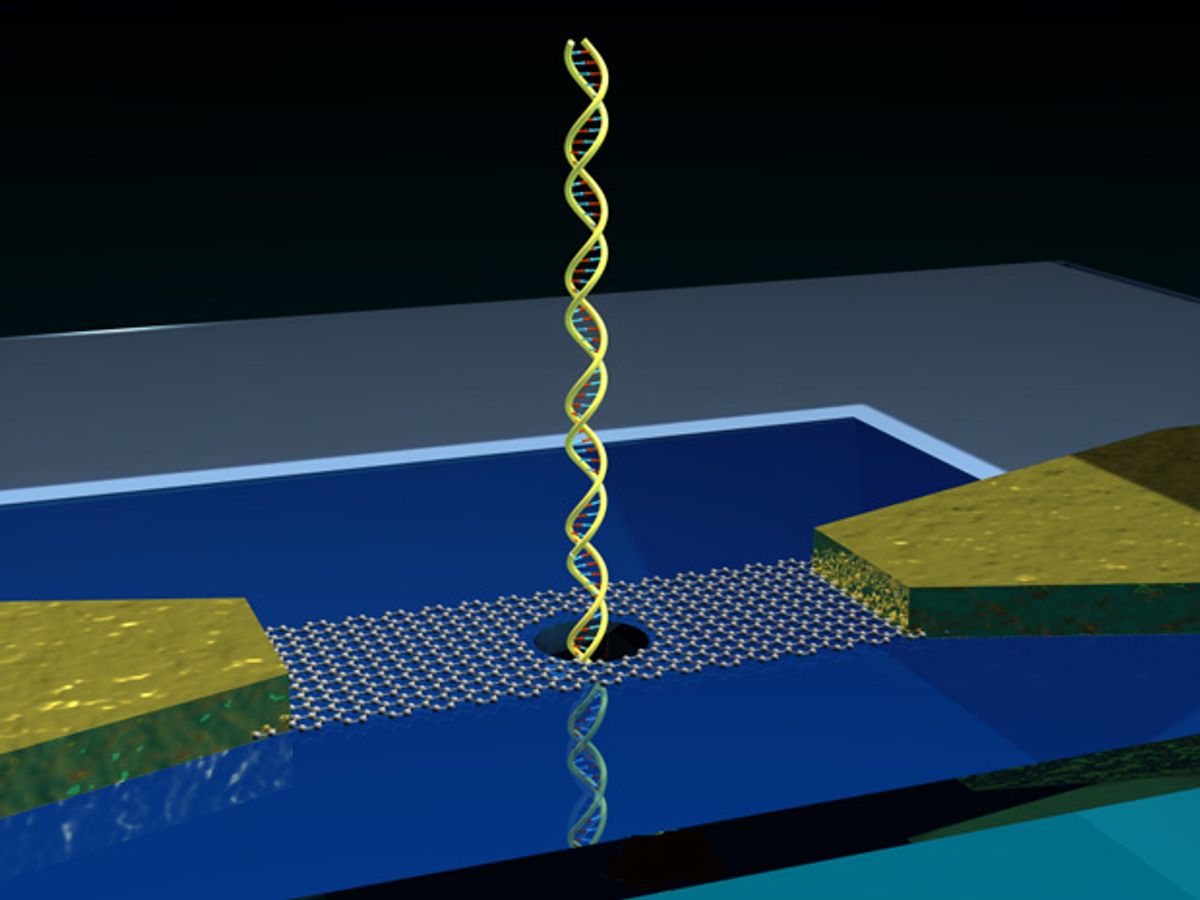Nanopore sequencing—the ability to sequence a strand of DNA by reading its electronic signature as it slithers through a nanoscale pore in a membrane— has always held great promise, but it has been frustratingly difficult to realize its full potential. There have been attempts to boost the faint signal produced as the DNA passes through the nanopore. Other research has aimed to slow the speed at which the DNA passes through the nanopore to improve the measurement. Some researchers have even created a molecular motor that doesn’t just slow the DNA down but controls it’s movement through the nanopore.
Now researchers at the Ecole Polytechnique Fédérale de Lausanne (EPFL) in Switzerland have turned to the wonder material graphene as the membrane.
The original technique on which this latest iteration of nanopore sequencing is based suffered from the nanopore frequently clogging up as well as a general lack of precision in the measurements.
“We thought that we would be able to solve these problems by creating a membrane as thin as possible while maintaining the orifice’s strength”, said Aleksandra Radenovic from the Laboratory of Nanoscale Biology at EPFL in a press release.
The EPFL research, which was published in the journal Nature Nanotechnology (“Detecting the translocation of DNA through a nanopore using graphene nanoribbons”), showed that the typical insulating membrane that is used nanopore schemes is as thick as 15 DNA bases—the chemical rungs of DNA's ladder-like helix. But graphene is only 0.335 nm thick, which is equal to the spacing between two bases in a DNA chain, making it possible to individually analyze the passage of the DNA bases as the squiggle through the nanopore.
While the researchers believe that graphene will ultimately lead to a higher precision nanopore sequencing technique, the speed at which the DNA molecule pass through the nanopore remains a problem. In only 5 milliseconds 50 000 DNA bases can pass through. So the signal given off by the DNA passing through the pore is too faint to read.
“However, the possibility of detecting the passage of DNA with graphene nanoribbons is a breakthrough as well as a significant opportunity”, added Radenovic in the release.
Illustration: EPFL
Dexter Johnson is a contributing editor at IEEE Spectrum, with a focus on nanotechnology.



